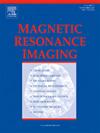Combination amide proton transfer imaging with diffusion-weighted imaging for differentiating tumor characteristics and assessing Ki-67 expression in soft tissue tumors
IF 2
4区 医学
Q2 RADIOLOGY, NUCLEAR MEDICINE & MEDICAL IMAGING
引用次数: 0
Abstract
Purpose
To investigate the utility of amide proton transfer (APT) imaging in conjunction with diffusion-weighted imaging (DWI) for distinguishing between benign and malignant soft tissue tumors (STTs), and to assess the correlation with Ki-67 expression.
Materials and methods
A retrospective analysis was performed on 67 patients with soft tissue tumors. According to the pathological findings, the cohort was categorized into 39 cases of benign tumors and 28 cases of malignant tumors. ALL patients underwent APT imaging and DWI examinations, APT and Apparent diffusion coefficient (ADC) values were measured. Independent sample t-tests were used to compare the ADC and APT values between two groups. Receiver operating characteristic (ROC) curves were used to assess the sensitivity, specificity, and area under the curve (AUC) of APT, ADC, and the combination of ADC + APT in distinguishing benign and malignant tumors. The Delong test was employed to compare the diagnostic performance among these measures. Additionally, Spearman's correlation analysis was used to examine the relationship between APT, ADC and Ki-67 expression.
Results
The APT values of malignant groups were significantly higher than benign groups (3.32 ± 0.93 % vs. 1.87 ± 0.99 %; P < 0.01). The ADC values of malignant groups were significantly lower than benign groups (1.08 ± 0.55 × 10−3 mm2/s vs. 1.67 ± 0.54 × 10−3 mm2/s; P < 0.01). The ROC analysis showed that the AUC values of APT, ADC, and APT+ADC in distinguishing benign and malignant tumors were 0.855, 0.795, and 0.911 respectively. The Spearman's correlation analysis showed that APT and ADC values were significantly correlated with Ki-67 expression,and the correlation coefficients were 0.501 and −0.526, respectively.
Conclusions
The APT imaging and DWI can effectively differentiate between benign and malignant STTs. Combining these techniques enhances diagnostic efficiency. Furthermore, APT and ADC values show a significant correlation with tumor Ki-67 levels, which provides a robust basis for predicting STTs aggressiveness.
酰胺质子转移显像联合弥散加权显像对软组织肿瘤特征鉴别及Ki-67表达的评价。
目的:探讨酰胺质子转移成像(APT)联合弥散加权成像(DWI)在软组织良恶性肿瘤(STTs)鉴别中的应用价值,并探讨其与Ki-67表达的相关性。材料与方法:对67例软组织肿瘤患者的临床资料进行回顾性分析。根据病理结果将该队列分为良性肿瘤39例,恶性肿瘤28例。所有患者均行APT成像和DWI检查,测量APT和表观扩散系数(ADC)值。采用独立样本t检验比较两组间ADC和APT值。采用受试者工作特征(ROC)曲线评价APT、ADC及ADC + 联合使用APT鉴别良恶性肿瘤的敏感性、特异性和曲线下面积(AUC)。采用德龙检验比较这些方法的诊断性能。此外,采用Spearman相关分析检测APT、ADC与Ki-67表达的关系。结果:恶性组的APT值明显高于良性组(3.32 ± 0.93 % vs. 1.87 ± 0.99 %;P -3 mm2/s vs. 1.67 ± 0.54 × 10-3 mm2/s;P 结论:APT和DWI能有效鉴别stt良恶性。这些技术的结合提高了诊断效率。此外,APT和ADC值与肿瘤Ki-67水平有显著相关性,这为预测stt的侵袭性提供了坚实的基础。
本文章由计算机程序翻译,如有差异,请以英文原文为准。
求助全文
约1分钟内获得全文
求助全文
来源期刊

Magnetic resonance imaging
医学-核医学
CiteScore
4.70
自引率
4.00%
发文量
194
审稿时长
83 days
期刊介绍:
Magnetic Resonance Imaging (MRI) is the first international multidisciplinary journal encompassing physical, life, and clinical science investigations as they relate to the development and use of magnetic resonance imaging. MRI is dedicated to both basic research, technological innovation and applications, providing a single forum for communication among radiologists, physicists, chemists, biochemists, biologists, engineers, internists, pathologists, physiologists, computer scientists, and mathematicians.
 求助内容:
求助内容: 应助结果提醒方式:
应助结果提醒方式:


